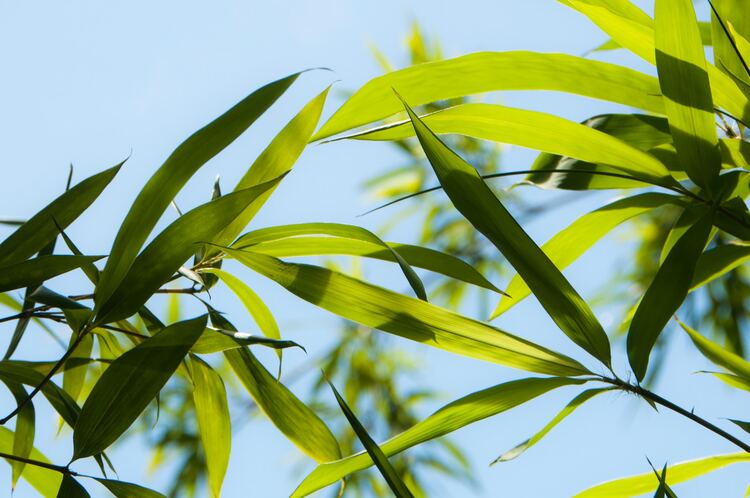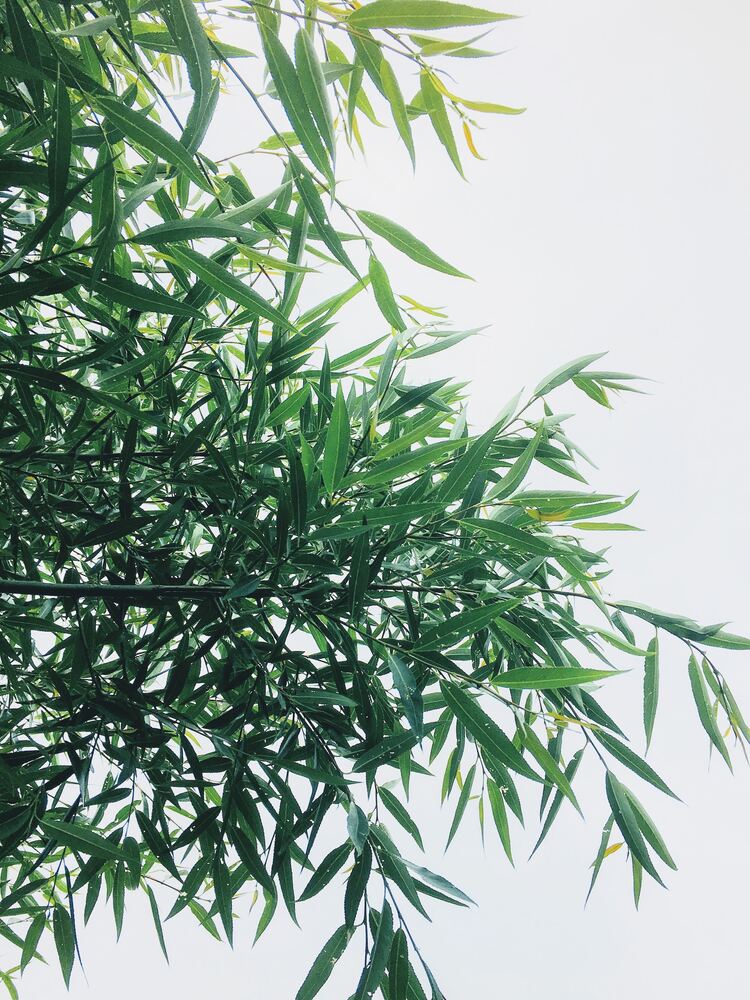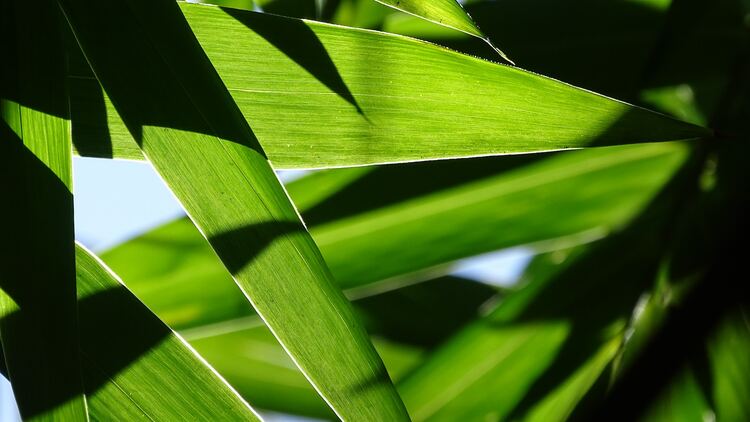Bamboo leaf tea is an intriguing beverage that can be a perfect addition to your daily routine. Made from the leaves of the fast-growing bamboo plant, this tea boasts a variety of potential health benefits. With its eco-friendly nature and captivating aroma, you will appreciate the experience of sipping on this extraordinary drink.
In this article, we cover the many facets of bamboo leaf tea. Keep reading to immerse yourself in the wonders of what the versatile bamboo plant has to offer.
Please note: This article contains affiliate links, meaning I may earn a commission if you make a purchase by clicking a link. Of course, this comes at no extra cost to you and helps me keep offering readers solid information.

What is Bamboo Leaf Tea?
Bamboo leaf tea is a type of herbal tea made from the leaves of the bamboo plant. The tea is created by harvesting the leaves, drying them, and then steeping them in hot water. It has been consumed for centuries in various Asian countries, particularly China and Japan, where bamboo is abundant.
The tea has a mild, sweet flavor that appeals to a wide array of taste preferences. Its natural sweetness eliminates the need for added sugars or artificial sweeteners, providing a pure sipping experience.
The taste of bamboo leaf tea is often compared to honey’s due to its delicate sweetness. Some people compare its flavor to green tea but with a milder profile. Its taste profile allows for diverse consumption methods and pairing options.
Combining with Other Ingredients
Bamboo leaf tea can be enhanced by incorporating additional flavors. When trying a new tea, we recommend trying it by itself first. Then, it is up to you to experiment to create a taste that suits your preferences. Here are ingredients that go well with this tea (and boost its health properties):
- Ginger adds a warm, spicy note that complements the tea’s sweetness.
- Pepper brings a subtle heat to your cup, adding complexity to the flavor.
- Chamomile lends a soothing, floral layer that pairs beautifully with bamboo leaf tea.
- Peppermint delivers a fresh, cooling sensation that balances the natural sweetness.
- Cloves introduce a hint of spice and depth to the overall taste.

Preparation and Brewing
Selecting the Right Bamboo Leaves
When choosing bamboo leaves for your tea, look for fresh, young leaves free from defects or damage. The leaves should be green and ideally harvested from a sustainable source. The flavor and quality of your tea will depend on the quality of the leaves you select.
Step-by-Step Brewing Method
- Prepare the bamboo leaves: Thoroughly rinse the leaves under running water to remove dirt or debris. Next, cut or tear the leaves into small pieces. This will help release their natural flavors and make it easier to brew your tea.
- Choose your brewing method: You can brew bamboo leaf tea using loose leaf or tea bags. If you prefer loose leaf, place the prepared bamboo leaves directly into your teapot. For tea bags, fill them with cut leaves and seal them securely (or use tea bags as they come from the manufacturer).
- Boil water: To bring out the full flavor of the tea, use filtered water and bring it to a boiling temperature.
- Brew your tea: Once the water is boiling, pour it over your tea leaves or tea bags. Proper brewing time for bamboo leaf tea is typically between 3-5 minutes. Let the tea steep for 3 minutes for a lighter taste, and for a stronger, bolder flavor, you can let it steep for 5 minutes.
- Strain and serve: Using the loose-leaf method, use a strainer to remove the leaves from your teapot before pouring the tea into cups. If you use tea bags, remove the bags from your teapot after brewing.
If you consider adding any of the abovementioned ingredients to the tea, do so during brewing time.
Serving Suggestions
Bamboo leaf tea is highly versatile, making it an enjoyable beverage at various temperatures and times of the day. Here are some serving suggestions to help you get the most out of this tea:
- Hot tea: Steep your bamboo leaf tea into hot water for a warm beverage.
- Iced tea: Brew the tea stronger, then serve over ice for a refreshing, cool drink.
- Morning tea: Sip a hot cup of bamboo leaf tea to start your day with a light touch of sweetness.
- Before bed: Enjoy a warm cup of this caffeine-free tea to relax and unwind in the evening.
Enjoy sipping on this delightful beverage!
Comparing Bamboo Leaf Tea with Other Teas
Green Tea vs. Bamboo Leaf Tea
You might be familiar with green tea, a popular tea known for its numerous health benefits and refreshing taste. When comparing it to bamboo leaf tea, there are some striking differences. While both come from plants, green tea is made from the leaves of the Camellia sinensis plant, whereas bamboo leaf tea comes from the leaves of bamboo plants.
Caffeine Content: Green tea contains caffeine, typically around 35 mg per cup. Bamboo leaf tea, on the other hand, is caffeine-free. This makes it a suitable choice for those who want to enjoy a soothing cup of tea without the stimulating effects of caffeine.
Health Benefits: Both teas offer various health benefits but differ in their specific properties. Green tea is known for its antioxidant compounds, which can help protect your body from free radicals and reduce inflammation. Bamboo leaf tea boasts a high silica content, which can promote healthy skin, hair, and nails and support bone health.
Herbal Teas and Bamboo Leaf Tea
Herbal teas are a diverse group of caffeine-free teas made from various plants, spices, and fruits. Bamboo leaf tea falls into this category as a caffeine-free, plant-based tea option.
- Flavor Profiles: The taste of herbal teas varies greatly depending on their ingredients. Bamboo leaf tea offers a mild, slightly sweet flavor. It can be a versatile addition to your tea collection, fitting in nicely with other herbal teas you may enjoy.
- Caffeine-Free Alternatives: Both bamboo leaf tea and other herbal teas can be suitable options if you’re seeking a caffeine-free alternative to traditional teas like green, black, or oolong tea.
Consider these comparisons when considering bamboo leaf tea as a potential addition to your tea routine. By understanding the differences between bamboo leaf tea, green tea, and other herbal teas, you’ll be better equipped to decide which teas best suit your preferences and needs.

Culinary Uses
Bamboo leaf tea offers a refreshing flavor to your kitchen adventures. You can incorporate it into various recipes, elevating your meals’ taste and nutritional value. Here are some ideas for using bamboo leaf tea in your cooking:
- One popular approach is to use bamboo leaf tea as a base for soups and broths. The subtle, grassy notes provide a great foundation for vegetable or meat-based dishes.
- Bamboo leaves also work as a versatile ingredient in various spice blends. Mix the finely chopped leaves with clove, cinnamon, and ginger to make a warming beverage or a dry spice mix to coat your favorite vegetables or meats before cooking.
- In addition, bamboo leaves (or the spice blend containing it) pair well with dishes like pork and fermented vegetables. Use the leaves (or blend or wet mix) to marinate pork before grilling or braising, allowing the flavors to meld together and create a tasty, aromatic dish.
- Similarly, you can infuse fermented vegetables with bamboo leaves, such as kimchi or pickles, enhancing their taste and complexity.
- Another idea is to use bamboo leaf tea instead of water when cooking rice or other grains to infuse them with a delicate taste. The tea adds a pleasant aroma and subtle flavor to the grains, enhancing the overall dish.
- Bamboo leaf tea can be incorporated into desserts and sweets. You can use it as a base for flavored syrups or infuse it into custards, puddings, or ice creams to add a unique touch. The tea can lend a gentle grassy note that pairs well with sweet treats.
These are just some ideas. There are many ways to reap this tea’s health benefits while adding a touch of culinary creativity to your meals.

Growing and Harvesting Bamboo
Bamboo is a fantastic plant that thrives in various climates. It’s a type of tropical grass known for its versatility and fast growth. This section will share insights on the most suitable bamboo types for tea and harvesting tips.
Suitable Bamboo for Tea
When it comes to choosing the right bamboo plant for making tea, there are a few factors you should consider:
- Climate: Your location plays a significant role in determining the appropriate bamboo species. For example, tropical climates are perfect for nurturing Moso or Phyllostachys edulis, while those living in Africa or Australia might consider Bambusa or Dendrocalamus varieties.
- Properties: Look for bamboo types with a high concentration of beneficial compounds, such as silica, flavonoids, and antioxidants. These nutrients are essential for crafting high-quality bamboo leaf tea.
Here are a few popular bamboo types for making tea:
- Phyllostachys edulis (Moso Bamboo): Widely grown in Asia, this species is known for its high silica content and sweet taste.
- Bambusa oldhamii: Mainly found in Eastern Asia, it features a mild flavor and many antioxidant compounds.
- Dendrocalamus asper: A variety native to Southeast Asia, it’s renowned for its bountiful nutrients and robust flavor.
Harvesting Tips
Harvesting bamboo leaves for tea making can be a fun and rewarding experience. Here are some tips to help you get the most out of your bamboo plants:
- The right time: Aim to collect young bamboo leaves, as they have a higher concentration of nutrients. The best time to harvest is during the early morning or late afternoon to ensure the leaves retain their moisture and freshness.
- Choose healthy culms: When selecting leaves, focus on healthy, strong culms that are relatively free from any signs of damage or disease.
- Proper tools: Use a pair of sharp, clean pruning shears or scissors to cut the leaves from the culms gently. This will minimize any damage to the plant and encourage further growth.
- Storage and preparation: Thoroughly rinse the leaves with clean water to remove dirt or residue after harvesting. Lay them out to air dry or use a dehydrator to quicken the process. Once fully dry, store them in an airtight container until you can make your bamboo leaf tea.
I realize not everybody will want or have the capability to harvest bamboo leaves. In short, we will provide information on where to acquire bamboo leaves from a reputable vendor.

Health Benefits
Nutritional Values
Bamboo leaf tea is a treasure trove of health benefits for your body. It is packed with essential minerals, vitamins, and antioxidants:
- Minerals: Iron, manganese, zinc, and copper are abundant in bamboo leaves.
- Vitamins: Thiamine, niacin, vitamin A, vitamin B6, and vitamin E can be found in this tea.
Stronger Hair and Nails
Your hair and nails will thank you for sipping on bamboo leaf tea! It is rich in silica, which can help improve the quality and strength of your hair and nails. In addition, silica promotes collagen production, essential for maintaining elasticity and suppleness in your skin.
Skin Health
Bamboo tea isn’t just limited to strengthening your hair and nails – it’s excellent for your skin, too! Its high antioxidant content fights off free radicals, protecting your skin against signs of aging and environmental damage. The vitamins and minerals found in bamboo leaves also contribute to its skin-loving benefits, giving your skin a healthy glow.
So, next time you need a health boost, remember to give bamboo leaf tea a try!
Buying Recommendations
Bamboo leaves are found at local health food stores or specialty tea retailers. You can also acquire the leaves online. Here are our top recommendations:


Uncle Lee’s Tea Organic Tea, Bamboo Hibiscus

Uncle Lee’s Tea Organic Tea, Bamboo Lemon Ginger

Frequently Asked Questions
What are the health benefits of bamboo leaf tea?
Bamboo leaves tea offers several health benefits, mainly due to its high silica content. Silica contributes to healthier hair, skin, and nails. Additionally, bamboo tea may help improve digestion, support joint health, and provide antioxidant properties. Remember to consult your healthcare provider before adding any new herbal remedies to your diet.
How often should bamboo tea be consumed?
You may enjoy bamboo leaf tea 1-2 times daily for best results. Start with a single cup daily and gradually increase to two if you find it beneficial and while monitoring your body’s response. As with any herbal tea, listening to your body and consulting your healthcare provider for personalized advice is essential.
What’s the safest way to drink this tea?
Choose high-quality bamboo leaves free from pesticides and contaminants to ensure the safest consumption. Additionally, start with a small serving and increase moderately to ensure you’re not sensitive or allergic to the tea. If you experience any adverse effects, discontinue use and consult your healthcare professional.
What is the ideal brewing method?
The ideal brewing method for bamboo tea is steeping 2 teaspoons of dried leaves in 8 ounces of hot water (between 190-200°F) for 4-5 minutes. Adjust the steeping time and water temperature to suit your taste preferences. Once steeped, strain the tea and enjoy it hot or let it cool down to enjoy over ice.
Can you use dried bamboo leaves for tea?
Yes, dried bamboo leaves are an excellent option for making bamboo leaf tea. When properly stored, dried leaves retain the most beneficial properties and can be conveniently used for brewing.
Where can I purchase high-quality bamboo tea?
Check your local health food stores, herbal shops, or specialty tea retailers to purchase high-quality bamboo tea. Alternatively, you can find reputable online vendors offering organic and sustainably sourced bamboo teas (we have recommendations above). Make sure to research the brand and its sourcing practices before purchasing to ensure you receive the best quality product.
There you have it! Sharing so much about bamboo and the advantages of consuming this plant as a tea has been fantastic. I hope you have enjoyed the article!
Have you tried bamboo leaf tea?
More About Herbal Tea
What Does Peppermint Tea Taste Like?
What Does Mint Tea Taste Like?
What Does Ginger Tea Taste Like?
What Does Lemon Balm Tea Taste Like?
What Does Chamomile Tea Taste Like?
What Does Lavender Tea Taste Like?
What Does Mullein Tea Taste Like?
What Does Raspberry Leaf Tea Taste Like?